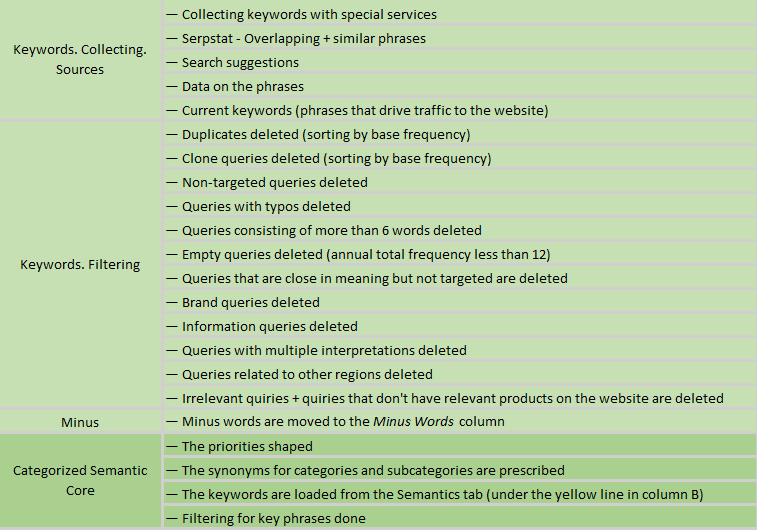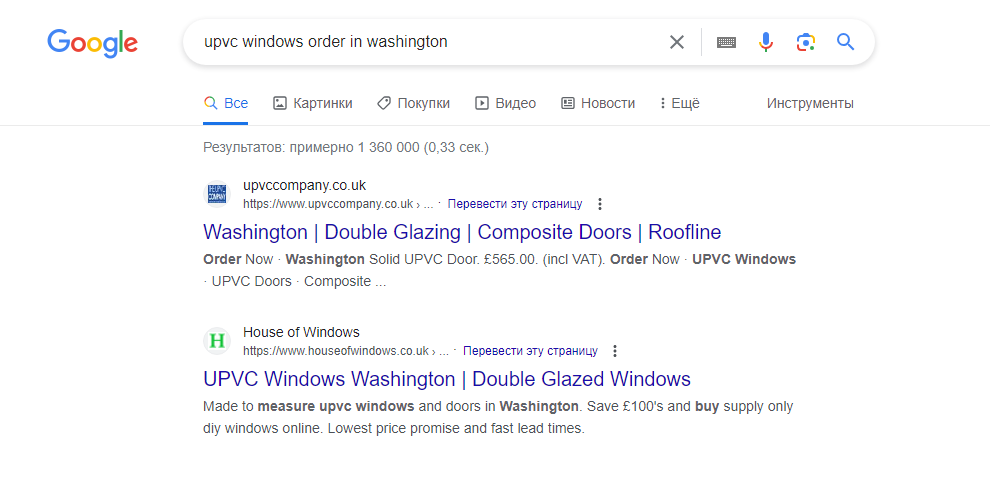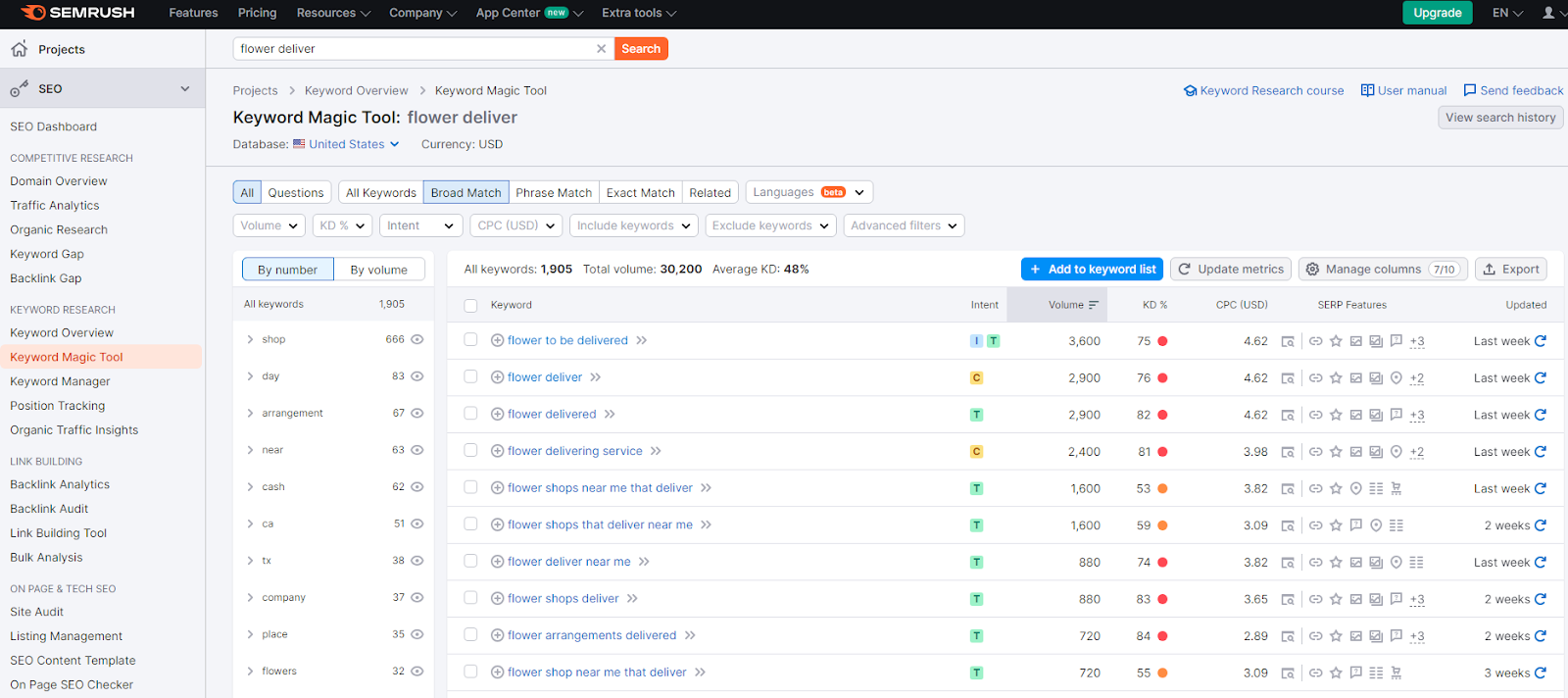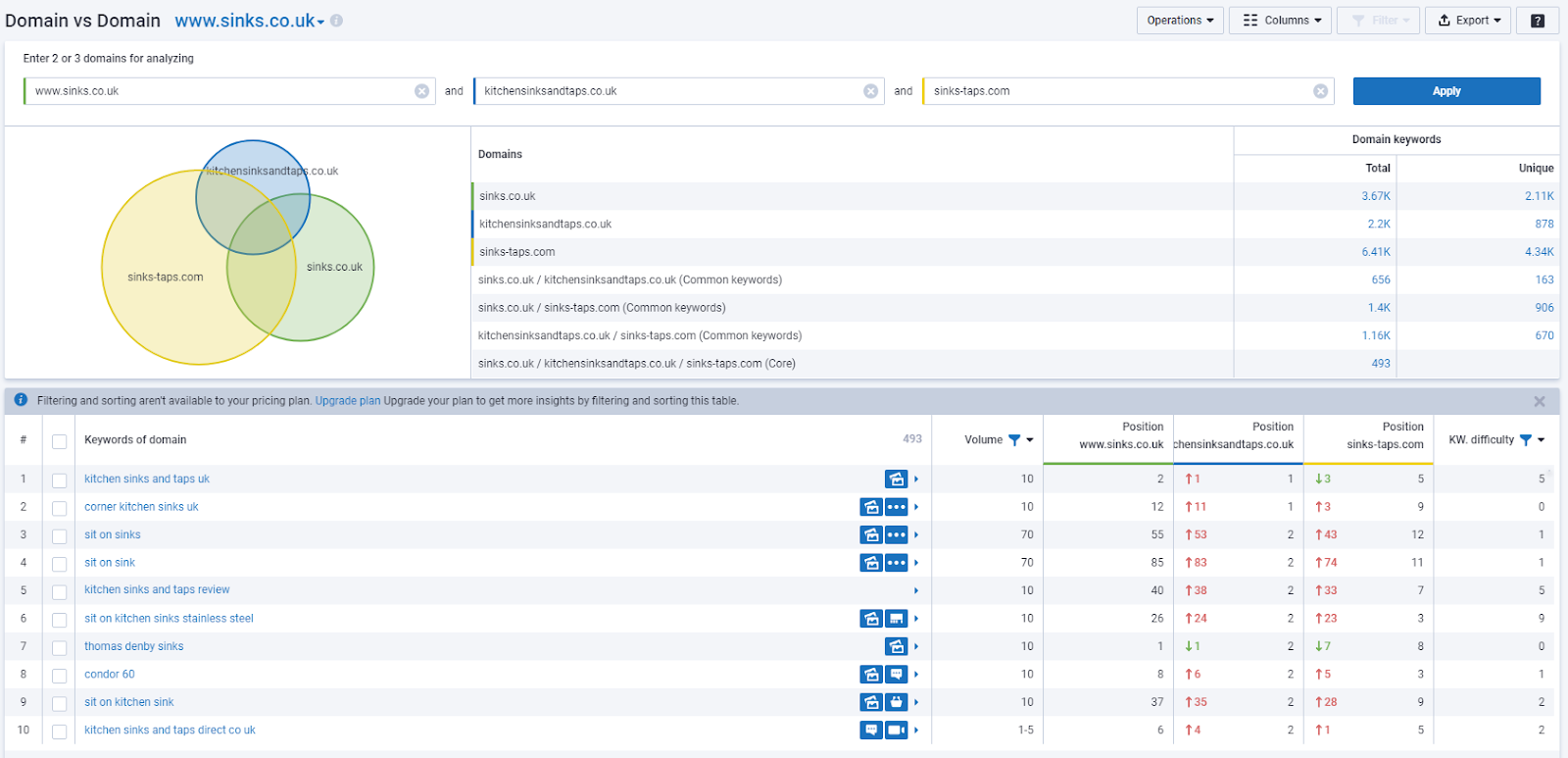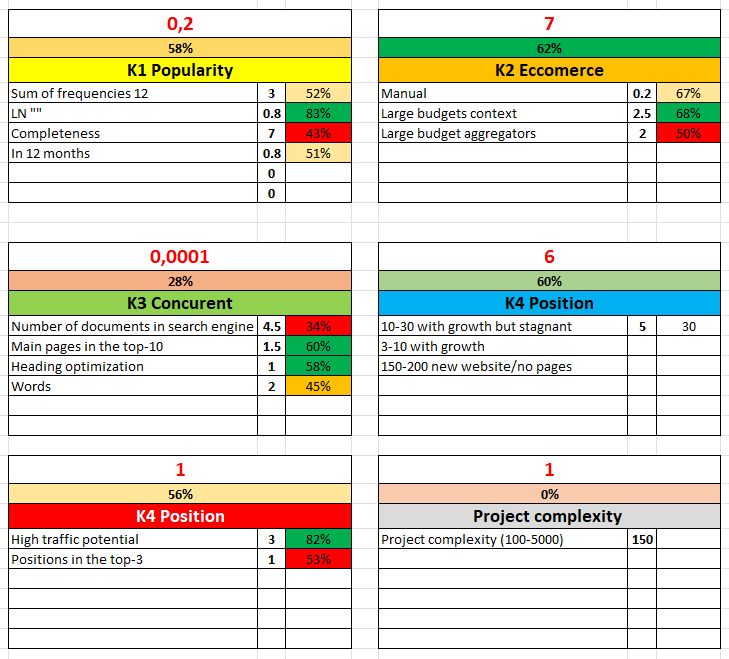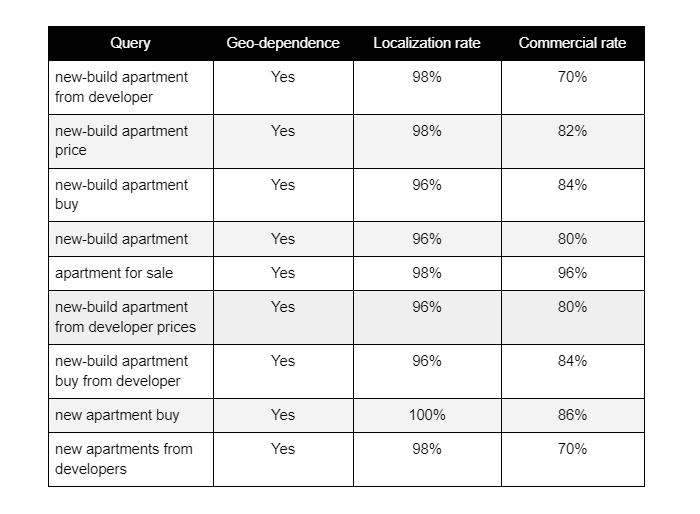Not all phrases are equally important and effective for the successful development of a project and not all phrases should be used to rank your website at the top of the SERP. You can determine the focus for work on promotion after collecting the semantic core of the project – this is one of the initial services before starting search engine promotion.
The core creating work consists of three major stages: collection, filtering, grouping by relevant landing pages and scoring. The formation of a complete and correct core depends directly on the variety of sources used to collect the phrases.
In our work we consider combinations of 19 parameters collected for each phrase: we process and analyze seasonality, conversion rate, traffic potential of search queries, so that we include only valuable phrases that are beneficial to your business.
Why We Collect the Semantic Core
We set priority categories which are essential for the website to be at the top of search engines and then, based on these categories, we build semantics, consisting of search queries.
- The semantic core is necessary to form the structure of a website or catalog.
- When designing filters for an online store, semantic core makes it easier to search for different items in the catalog.
- The semantic core helps us create an anchor list to make a relevant link profile without over-spam.
The aim of the specialist who starts to form the core is to collect it as completely as possible: with all relevant keywords of the project, long-tails and various synonyms, low-frequency and narrow-niche queries.
The collection and scoring of the keywords is evolving along with promotion technologies. Now it usually takes a specialist not less than 12 hours, as this task cannot be 100% automated.
For quality control we use a system of semantics checklists, which allows us to have a full base of pure and working phrases at the start of the project. By working phrases, we mean estimating traffic for each cluster with an estimated CPO for each month of promotion.
How to Start Building the Core
To better understand how to start working on the semantic core, we analyze the search query – it consists of a body, specifier and tail.
Before colecing, we specify a query body for each category of the website. Later this body can be extended with the help of available servies such as Semrush Key Magic Tool or other professional tools.
What Other Sources to Use
Parse information from the competitors. The critical thing is that your competitors are of the "same weight" as you. If you sell printer cartridges, you should not compare yourself with a marketplace or a large supplier of electronic equipment. Find the competitor that has business in the same area as you do and has a similar assortment.
While analyzing competitors, we go further and figure out a fragment of keywords, common to several competing websites – this is the crucial fragment of queries.
By collecting process we mean not only making a list of phrases, but also collecting data on them. To do this, we delete zero-frequency phrases, non-relevant ones, informational queries and duplicates. We get a large series of keywords that are not yet ranked in any way, there is no additional information and we cannot yet determine which phrases are useful and which are not. So we apply additional parameters to the phrases.
For the same query search engines generate different relevant pages – this is a bad signal, as the pages compete on this query. The specialist has to check and assign the page to be optimized manually. Thus, we avoid "keyword cannibalization" – when several pages within a project compete for the same phrase.
Which Parameters We Use to Collect Keywords
We evaluate keywords on five major parameters: popularity, competitiveness, commerce, current positions and prospectivity. We collect data on all these factors, transform it and normalize it for further calculations.
As a result of scoring, each phrase gets a total score and a score for a separate factor. The expert sets the factor influence coefficient. In addition to these factors, manual samples are considered in the scoring.
In dependence on the characteristics of the project, we manually attach weight ("significance") to individual parameters or entire groups, so that the highest score is given to the phrases that are beneficial to the business and those for which we are more likely to get a positive result.
If we know the priorities for a certain product category, we mark all phrases of this category in the sample with the label "Priority" and attach an influence coefficient to this sample. When the scoring is done, not only the effective phrases in terms of scoring parameters appear at the top, but also the critical phrases for the client in terms of the potential of the best CPO.
1. Popularity
We determine how often this query is entered into the search and its dynamics, considering two factors:
Phrase frequency – how often users enter this particular query. Phrases can be high-frequency with more than 1000 displays per month, medium-frequency with queries from 100 to 1000 and low-frequency, which are searched less than 100 times per month.
Sometimes, clients ask why we should include low-frequency queries in the list of keywords and pay for the phrases that provide no more than a pair of users per month. However, low-frequency and mid-frequency queries are important – we use them to "feed" high-frequency queries.
Phrase seasonality – whether the dynamics of demand change over the course of one or two years.
2. Competitiveness
The competitiveness factor shows how many projects tend to be displayed for a particular search query and how well-optimized their pages are for it. To better understand the competitiveness of the query, we evaluate:
Amount of documents in different search engines – how many pages (documents) there are in the index of search engines. The more there are, the higher the competition for a keyword.
Amount of main pages relevant to the query: the more main pages there are in the top, the tougher the competition for the top position – the harder it is to struggle for the top position.
Title optimization, i.e. the occurrence of the key phrase in the Title of the page. The prevalence of occurrences in the top results indicates that the whole page is optimized for the query.
3. Commerce
Queries can be informational, navigational and commercial. The specificity is determined by the intent of the user's query – what they want to find. To promote e-commerce projects, we exclude informational and navigational queries.
| Information request | Transactional request |
| "pizza recipe" | "order a pizza" |
Information request
We use the following data to evaluate the commerce of a phrase:
- Budget for phrase promotion – approximate expenses for a month for the phrase with displays on the selected position in the specified region.
- Cost per click for the phrase – approximate cost per click for the phrase with displays on the selected position in the region.
- Budget for promotion in link aggregators – approximate costs per month for link promotion of a query in various aggregators.
How do we understand whether a query should be included in a segment for promotion?
If search engines generate commercial websites for the query, this query has more commerce. The parameter is defined as a percentage. For the query of 80% commerce, there are 80% of e-commerce projects.
4. Current positions
The "Current positions" group considers the presence of project phrases at the top of the SERP (top-10, top-30, beyond the top-100), as well as the dynamics of positions – whether the project is growing in positions or stagnating.
It's a measure of how the project is developing. The phrases providing a dynamic of growth should be prioritized. The "frozen" phrases that are far beyond the top-100 shouldn’t be the first priority.
5. Prospectivity
This factor specifies the very fact of promotion of the project on the query, what position and when the website can take on the SEPR.
We consider the dynamics of positions and expert evaluation. For example, "similarity to the top" – how much the project corresponds to the top and what potential positions it can take. For instance, 6 out of 10 projects cannot "fail out of" their positions in the top-10. So there are fewer potential slots for us.
Geo-dependence and localization
Query geo-dependent. Do the search engine results depend on the region? For example, when you are looking for movers, it's essential for you that these movers are in the same city as you. And if you want to know the indications for a medicine, then you basically don't care what region the relevant website belongs to.
Query localization. It’s the parameter characterizing the share of local (local for the region) results on the SERP. If you are going to enter the market with a local resource, but large interregional projects prevail on the SERP of these queries, the chance to take good positions is weak.
Relevant pages to the query on the SERP. To determine the landing page that we will optimize for the query we need to find out what page is shown by the search engines for the query.
All the parameters are used later on to analyze and select the phrases that are best to include in the segment for promotion.
We do not confine ourselves to frequency: we also evaluate the popularity, competitiveness, commerce, current positions and prospectivity. This helps to determine the complexity of the project and prepare the ground for further promotion – specifically, to establish a score for each phrase.
Later on, we will have to create segments for search engine promotion from the selected phrases and calculate the cost of each phrase per month. How the segments are built up and what the cost includes – these issues will be explained in the following materials.


